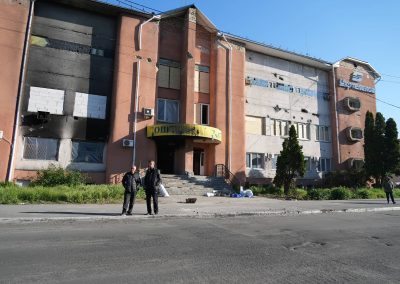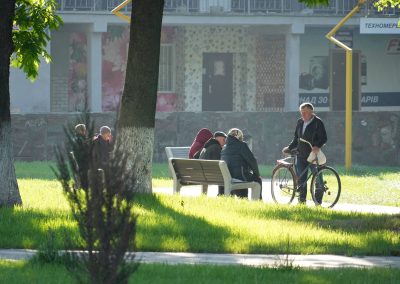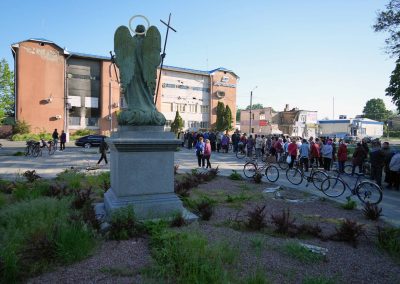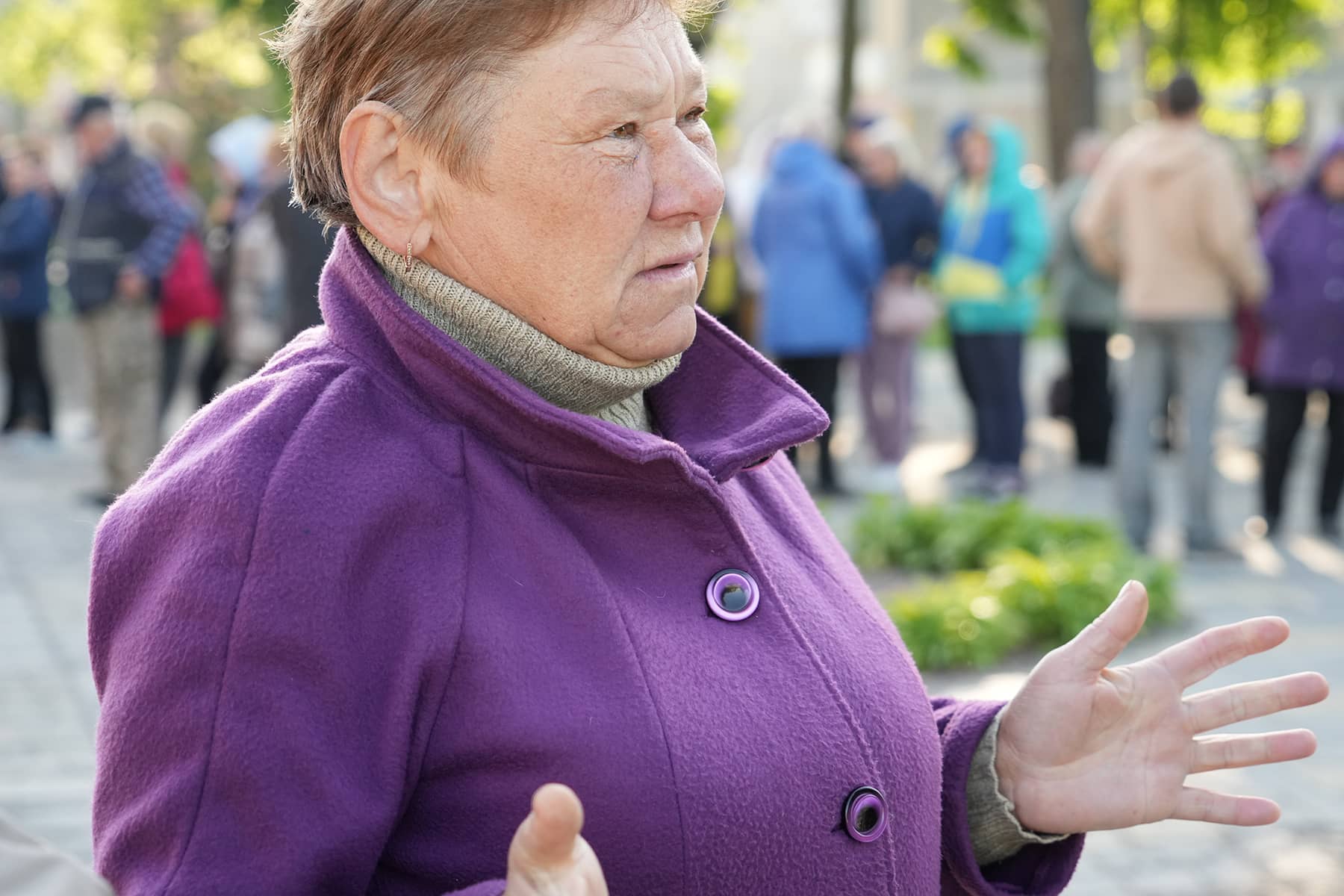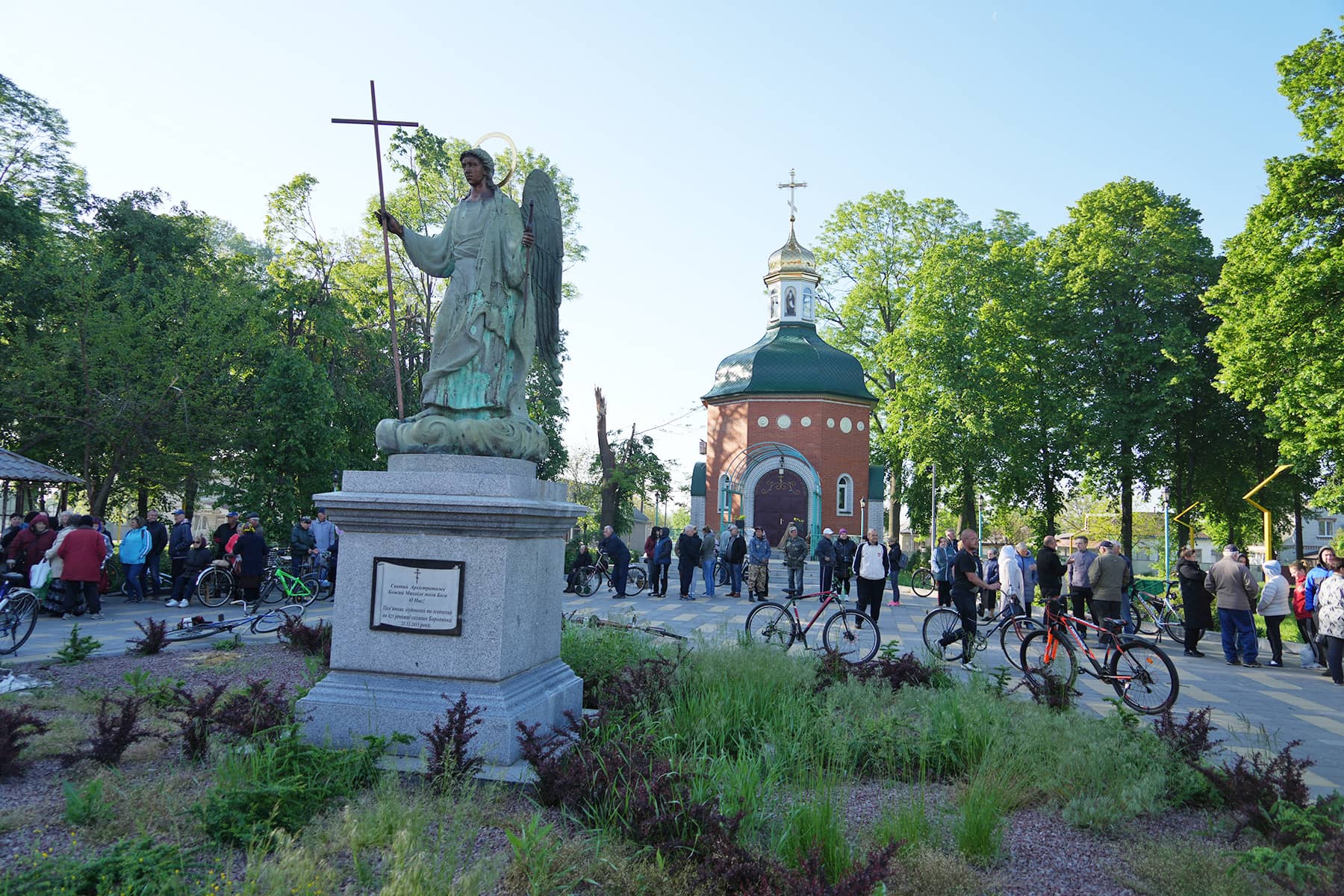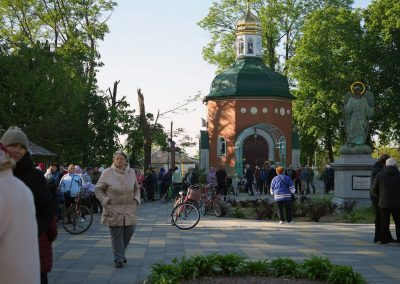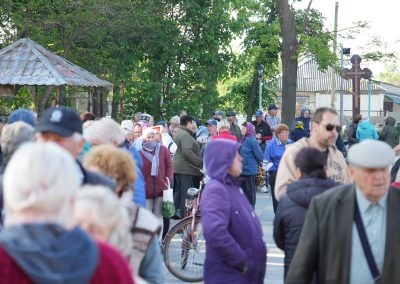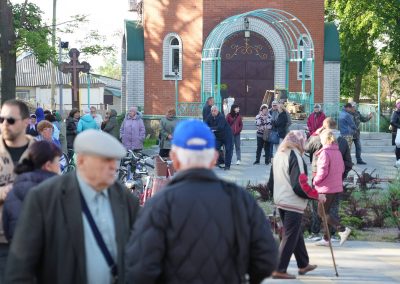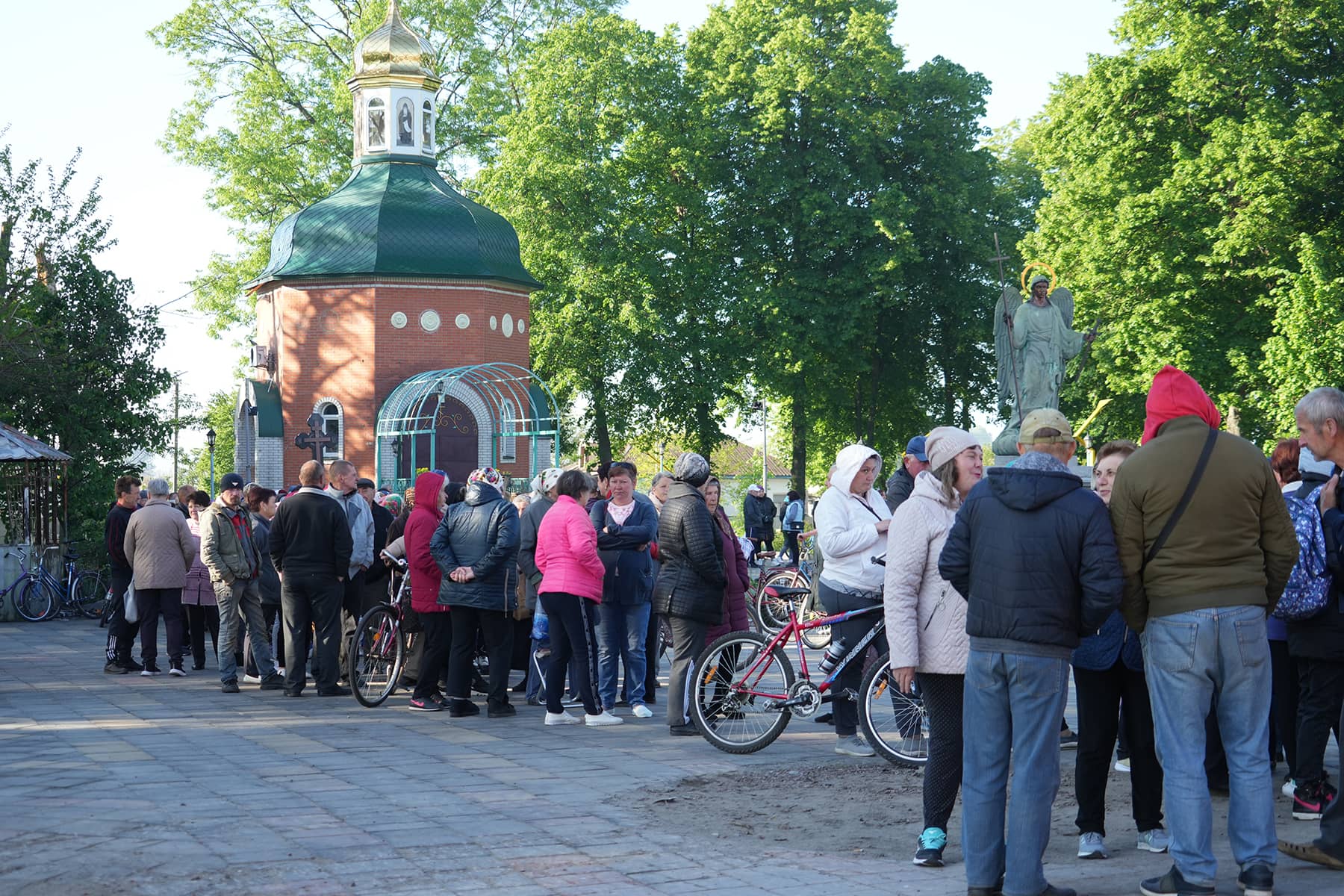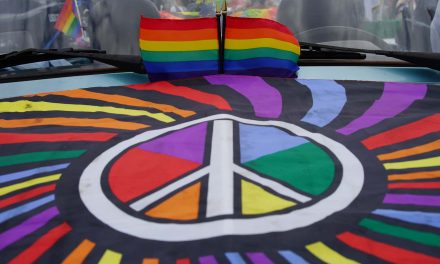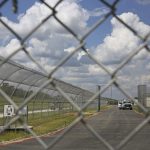
Russian forces arrived in the Ukrainian town of Borodyanka, 35 miles northwest of the capital Kyiv, shortly after the February 24 invasion began. The city sat at the crossroads of two highways. The location made Borodyanka attractive to commuters who worked in Kyiv, but also Russian forces making their way to the capital from Belarus.
The town was quickly overpowered by armed soldiers and armored tanks. On March 1, Russian jets bombed civilian targets, striking clusters of residential apartment buildings. Local officials said that about 90% of Borodyanka’s population had evacuated at the start of the shelling. But after Russian forces retreated, authorities found 650 dead bodies and of those 40 were children.
Borodyanka continues to deal with the aftermath of the Russian devastation, and the sheer scale of the destruction. Residents also faces ongoing dangers from unexploded ammunition. Crews have worked for weeks to clear the area of mines, boobytraps, and other ordnance.
Before the war, the city had a population of 14,000. Several thousand have returned, to reunite with families and review damage to their homes. And while Borodyanka is slowly recovering, by reopening hospitals and restoring infrastructure, it still faces a long road ahead.
On the day that the Milwaukee Independent team visited Borodyanka, we found a couple hundred citizens lined up hours ahead of the scheduled time to receive humanitarian aid. One individual spoke with us, 66-years-old Tatiana, about her experience living in Borodyanka during the Russian occupation.
“The occupiers behaved brutally to us. I saw a neighbor in a car driving towards the checkpoint to leave the city. He was shot right in the car. One woman was standing in line for bread, and she was shot in the head with a machine gun,” said Tatiana. “The first few days we sat at home and did not go out when we heard tanks passed nearby. We hid and did not even look out the window. But then we got used to it.”
Tatiana said the occupiers told them that they came to liberate the residents of Borodyanka from the Ukrainian nationalists.
She talked about how the Russians went to apartments where people continued to live, just to check if there was any suspicious activity. Where no one lived, they broke down doors, settled in, ate food, used electrical equipment.
“When the Russians retreated, they took everything that was precious, mostly money and gold. They left behind a sea of garbage,” said Tatiana.
Nearby to the city square where residents waited for supplies was the Orthodox Church of the Moscow Patriarchate. Tatiana explained that during the occupation, the Priest helped the Russians identify and hunt down members of the local Territorial Defense.
“After Borodyanka’s liberation, he was taken away by the SBU security service and is now in solitary confinement as a collaborator,” said Tatiana.
Also during the occupation, the Russians prevented local Ukrainian authorities from offering any help. Aside from the destroyed offices, city council employees, police, doctors, the very backbone of the city had all left.
“There was no opportunity to go to the hospital for medical help either. Then one day, the Russians just packed up and left. No one came to expel them. Only after a few days did our Ukrainian forces arrive,” said Tatiana. “After the occupation, life improved. At first humanitarian aid was brought almost every day. Now it is brought once a week on Tuesday at noon. People start arriving from 6:00 a.m. and stand in line for hours. By the time aid is given out, the people are waiting for hundreds of yards down the road. The humanitarian aid is not enough, so there is nothing left for the last people in line.”
Tatiana said that many shops had been able to reopen. But because so many people lost their jobs due the destruction caused by the Russians, few people could afford groceries. Most of the banks and ATMs in the city were also closed. The Milwaukee Independent team witnessed a crowd gathered outside one bank, waiting for it to open so they could withdraw cash.
© PHOTO NOTE: All the original editorial images published here have been posted to the Facebook page of Milwaukee Independent. That collection of photos contains the MI copyright and watermark for attribution, and may be used for private social media sharing. Do not download and share images directly from this page. mkeind.com/facebook
Series: Reports from Ukraine
- Reports from Ukraine: Traveling from Milwaukee to a country at war just to take a vacation from America
- Images from Ukraine: Latino artist travels to Irpin to paint mural inspired by "Echoes of Guernica"
- Images from Ukraine: Irpin residents welcome reissue of Russian Warship Stamp as latest sign of victory
- Stories from Ukraine: Wandering in the ruins of a shattered life after surviving Russia's invasion
- Images from Ukraine: Similar to the Alamo, martyred cities bought precious time to save a nation
- Stories from Ukraine: Tent camp offers shelter for displaced residents until Irpin can rebuild lost homes
- Images from Ukraine: Graveyards of Russian war machines show the scale of Putin's failure to seize Kyiv
- Images from Ukraine: Following the invasion convoy's 40-mile route and exploring an abandoned base
- Stories from Ukraine: Illegal weapons and proof of Russian War Crimes easily seen along streets of Irpin
- Images from Ukraine: How Irpin’s cemetery processed the staggering massacre of its local citizens
- Stories from Ukraine: Healing remains slow as Borodyanka residents recover from occupation
- Images from Ukraine: The deep scars of war remain visibly etched across the landscape of Borodyanka
- Interview with Oleksandr Markushin: Mayor of Irpin and the hero of a Hero City
- A Meeting of Sister Cities: Former and current Mayors of Irpin ask Milwaukee's business community for help
- Stories from Ukraine: Having a shared purpose helped Irpin's leaders protect the city and stop the invaders
- Stories from Ukraine: How Milwaukee helped a bakery feed hungry survivors in Bucha with fresh bread
- Stories from Ukraine: Bucha resident recalls how Russians turned neighborhood into a street of death
- Stories from Ukraine: How a mass grave of executions overshadowed accountability from Bucha’s leadership
- Images from Ukraine: Putin’s attack on Babyn Yar is a painful reminder of the broken vow of “Never Again”
- Images from Ukraine: An unexpected encounter with Jewish history and the bloody legacy of persecution
- Images from Ukraine: Listening to timeless voices of ethnic heritage etched in stone at Lychakiv Cemetery
- Images from Ukraine: The experience of attending a military funeral in Kyiv while children died in Uvalde
- Images from Ukraine: Stepping out of the fog of war to see the beauty of faith in ancient places of worship
- Images from Ukraine: The cities of Kyiv and Lviv were divided by history but remain united in identity
- Stories from Ukraine: Anya Nakonechna shares why the Lviv Opera is a symbol of her nation’s culture
- Images from Ukraine: A folk village where visitors can experience the life of past generations
- Images from Ukraine: Signs of renewal sprout from under Irpin’s rubble as city looks to the future
Oleh Pinta
Oleh Pinta and Halyna Salapata
Lее Mаtz
Milwaukee Independent editorial team for this special series: (UKRAINE) Lee Matz, photojournalist; Oleh Pinta, translator / reporter; Yaroslav Zdyrko, security / videographer; (MILWAUKEE) Halyna Salapata, logistics / translations.
Milwaukee Independent has reported on the situation in Ukraine since it was invaded on February 24. Coverage originally began with reactions and rallies from the local Ukrainian American community, and relationships with Milwaukee’s sister city of Irpin. Through partnerships and good journalism, sources were developed that enabled Milwaukee Independent to publish developments about the unprovoked war in realtime. In late May, a team from Milwaukee Independent spent nearly two weeks on the ground in Ukraine. The award-winning daily news magazine was the first and, at the time, only media organization to send staff into the country since the war began.
Reports from Ukraine: An extensive news series by Milwaukee Independent from a country at war

